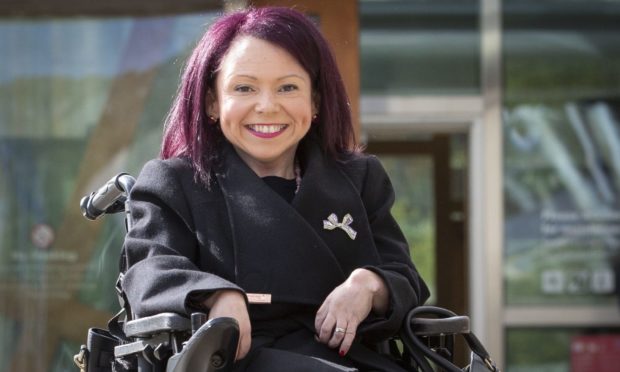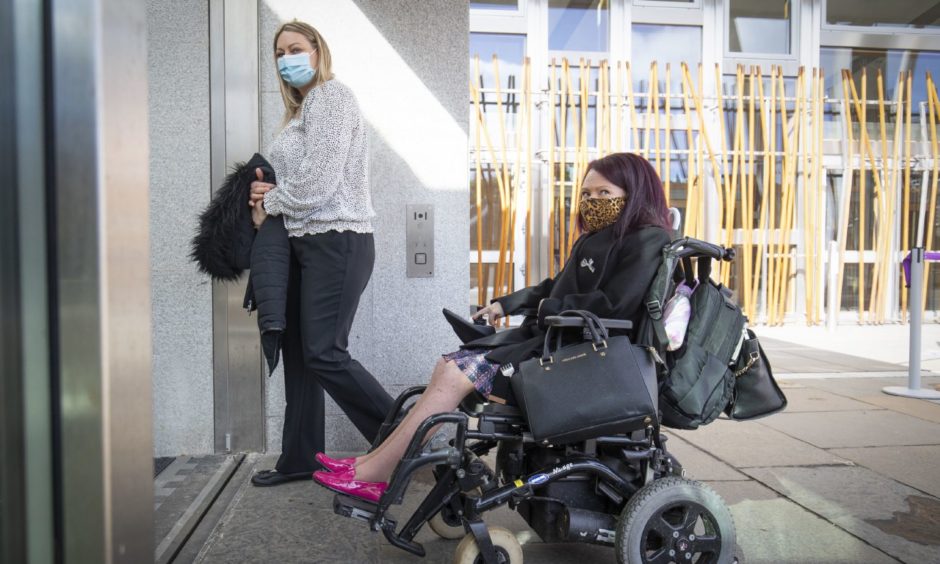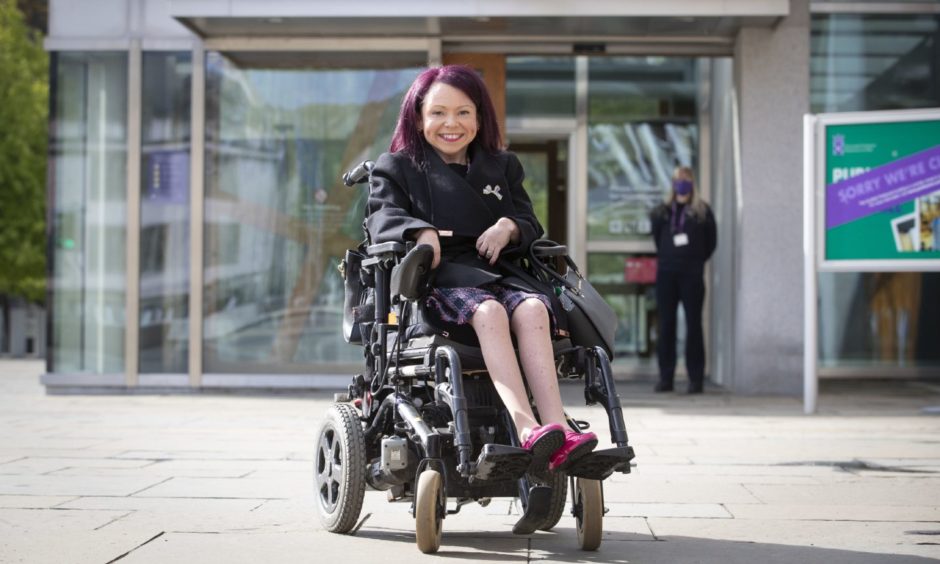Inverness-born MSP Pam Duncan-Glancy made history this month when she was elected to serve as Holyrood’s first permanent wheelchair user.
The 39-year-old has finished an “unbelievable” first week as newly elected MSP for the Glasgow region and colleagues say she has “already changed things” in the Holyrood chamber.
Being sworn in as an MSP felt “important” and she admits to “randomly bursting into tears with emotion because everything is just overwhelming and beautiful”.
The Scottish Labour politician says the support she has received from the parliament’s staff has been “outstanding” and shows when the effort is put in it is “possible for disabled people’s access and equality and human rights to be met”.
“The experience I’ve had in this first week has been so easy,” Ms Duncan-Glancy reflects.
“I didn’t realise how much it had changed the parliament because it felt normal to me, it felt like people were doing what they would always do.
“A couple of people said to me ‘you’ve already changed things here’.
“The language they used during the swearing in ceremony, for example, instead of ‘everyone stand when the presiding officer comes in’, the words they used were ‘if you’re able, please stand up to take your oath or affirmation otherwise please stay in your seat to take it’.
I felt a huge degree of urgency because there’s a lot of work to be done and I’m looking forward to getting my teeth stuck into things…”
“Apparently those words have never, ever been said before and I’ve been allowed to have a carer on the floor of the chamber, that’s never been done before.
“Even in my first week I can begin to see little changes I hadn’t noticed, because they made it so seamless for me, but changes other people have said ‘this is different, we can see it already’.
“I felt a huge degree of urgency because there’s a lot of work to be done and I’m looking forward to getting my teeth stuck into things like a a minimum income standard, making sure we get social security right for the people who need it, looking into how we can end social care charges and make sure the national care service is built.”
‘Never give up without a fight’
Born in Inverness, the newly-elected MSP grew up in the small Moray village of Mosstodloch, where she lived until she was 18.
The 39-year-old was diagnosed with juvenile idiopathic arthritis at 18 months old and has used a wheelchair since she was five.
“I broke my leg when I was five during a hydrotherapy session and I got put in a wheelchair and then that precluded the aggression of the illness,” she says.
“My condition is an aggressive form of arthritis so that took over my body effectively and affected every single joint in my body and pretty quickly did a lot of damage while I was growing up.
“And then it kind of settled down when I was 13 or 14. The arthritis is actually in remission but the damage that’s been caused to my joints means that I can’t move my elbows, I can only move my shoulders a tiny, little bit. I can hardly move my wrists and my knees are pretty locked.”
However, showing a determination that would characterise the rest of her life, Ms Duncan-Glancy persevered for two years to get the support in place to attend Stirling University to study psychology.
This was followed by a masters in health psychology at the same university and a move to Glasgow in 2012, before marrying husband Hugh, who is also a wheelchair user, in 2014.
She credits her late parents and sister with teaching her to be resilient and she also highlights the protections offered to her by growing up under a Labour government.
In an emotional campaign video, the Scottish Labour MSP, recalls being 16 years old and seeing an ad for a phone operator in a local taxi office.
She was told it was no longer available but her mum, who was a non-wheelchair user, inquired inside about the role and was “offered the job on the spot”.
You can make history in Glagsow today by electing the first wheelchair user to the Scottish parliament.
If you live in Glasgow Kelvin #PickPam on both ballots, if you live anywhere in Glagsow use your peach (List) vote to #PickPam #BothVotesLabour pic.twitter.com/6UqYCqWeW3
— Pam Duncan-Glancy MSP (@GlasgowPam) May 6, 2021
On the video, Ms Duncan-Glancy says: “On the Monday morning she pushed me into that office and told them that I would be working for them, not her.
“My mum’s gutsy move taught me to never give up without a fight so I’ve been getting into fights ever since.”
Katie
Ms Duncan-Glancy has been active in the Labour Party for around 20 years, after first getting involved in student politics in Stirling, where she became the first disabled person to be elected to the National Union of Students‘ (NUS) Scottish executive committee.
She continues to make history by being elected as the Scottish Parliament’s first permanent wheelchair user and her impact is already being felt by other disabled people.
The Glasgow MSP shared a video online of a young woman called Katie whose mum took to social media to say how proud her daughter is of Ms Duncan-Glancy.
The young disabled woman watched the newly-elected MSP take her oath “over & over”, her mum Clare said in a video posted on Twitter.
She posted: “This is what it means to be a young disabled woman look up to another disabled woman achieving her dreams.”
That’s me greetin again😭.
Katie is exactly why I’m doing this. https://t.co/rcWeW2s4Iy
— Pam Duncan-Glancy MSP (@GlasgowPam) May 13, 2021
Ms Duncan-Glancy says that is “exactly the sort of impact” she wants to make and it is why she has chosen to take videos documenting her work at parliament so “people like me can look in and see that the stuff everyone else takes for granted can be for us too”.
However, not all her experiences have been positive so far and she had to wait outside the Glasgow Emirates Arena for 45 minutes on the night of her own election count after staff did not believe she was a candidate.
She was then told she had entered via the wrong door, which was the accessible door, and no one knew where she should go.
Reflecting, she says the experience was “grim, to be honest” and admits she “didn’t expect it, at all”.
She adds: “By the Saturday everything had been fixed and it was a great experience so credit to the chief executive.
“I think what that showed is that if disabled people are in the room then you can get it right.
“These kind of things happen to disabled people every day but most disabled people don’t find themselves in a room with the chief executive of the organisation that gave them that experience or a room full of press to raise awareness of it.
“It highlights the importance of having a platform to make a point.
“I don’t think we can continue to make the changes we need if we continue to put the same people in the room.
“We need different people in the room to get this right.
“The parliament is already looking a bit different and feeling a bit different.
“Hopefully the more it looks like the people it represents, the more trust and faith the people of Scotland will put in it.”


